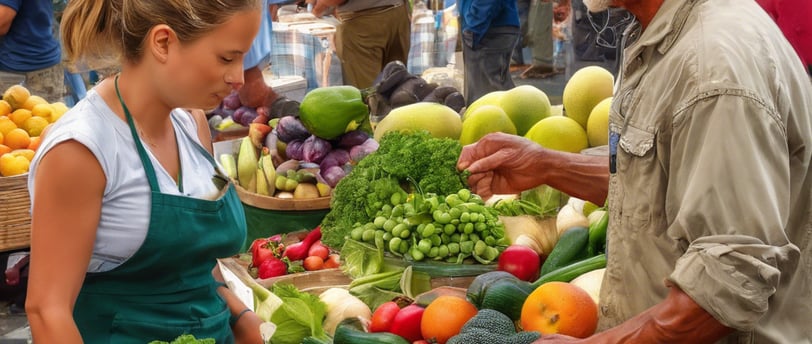5 Tips for Successful Crop Swapping
Learn how to make the most out of your crop swapping experience with these 5 essential tips. Discover the benefits of crop swapping, how to find local swap events, and how to ensure a successful exchange. Start sharing your homegrown produce and build a thriving community!
4/23/20242 min read
Crop swapping is a wonderful way to diversify your garden, save money, and engage with like-minded garden enthusiasts. If you're ready to jump into the world of crop swapping, here are five essential tips to help you make the most of your experience:
1. Know Your Crops Before you head to a crop swap, take inventory of what you have. Knowing the seasonality and condition of your produce, plants, or seeds is crucial. Healthy, robust plants and fresh produce are more likely to be welcomed and exchanged. Be honest about the quality and quantity of what you bring to the swap to maintain trust within your community.
2. Label Everything Clearly Proper labeling can make a huge difference. Include specific details like the name of the plant or produce, care instructions, and any unique qualities. For seeds, label with the plant type, variety, and sowing instructions. This not only helps in maintaining clarity during the swap but also shows your commitment to providing value to others in the community.
3. Bring Something Extra Besides the usual crops, consider bringing additional gardening supplies you might have in excess, like pots, tools, or compost. Sometimes these items are as welcome as plants and produce, especially among beginners who might still be gathering resources. This approach not only diversifies your offerings but also increases your chances of successful swaps.
4. Network and Share Knowledge Crop swaps are not just about exchanging goods; they're also a fantastic opportunity to learn and share knowledge. Engage with other gardeners to learn new gardening tips and tricks. Discuss pest control, seasonal planting strategies, and organic practices. These gatherings can be a goldmine of information, and sharing your own insights can help you become a valued member of the community.
5. Follow Up After the swap, try to keep in touch with the people you meet. Building a network can lead to more than just one-time swaps; it can create lasting friendships and opportunities for future exchanges. Follow up with an email or social media message to thank them for the swap and perhaps discuss how the plants or produce are doing in their new homes. This can reinforce the community spirit and encourage more frequent exchanges.
By following these tips, you can ensure a fruitful and enjoyable crop-swapping experience. Not only does this foster a sense of community, but it also supports sustainable practices and encourages a more decentralized approach to food production. Happy swapping!


